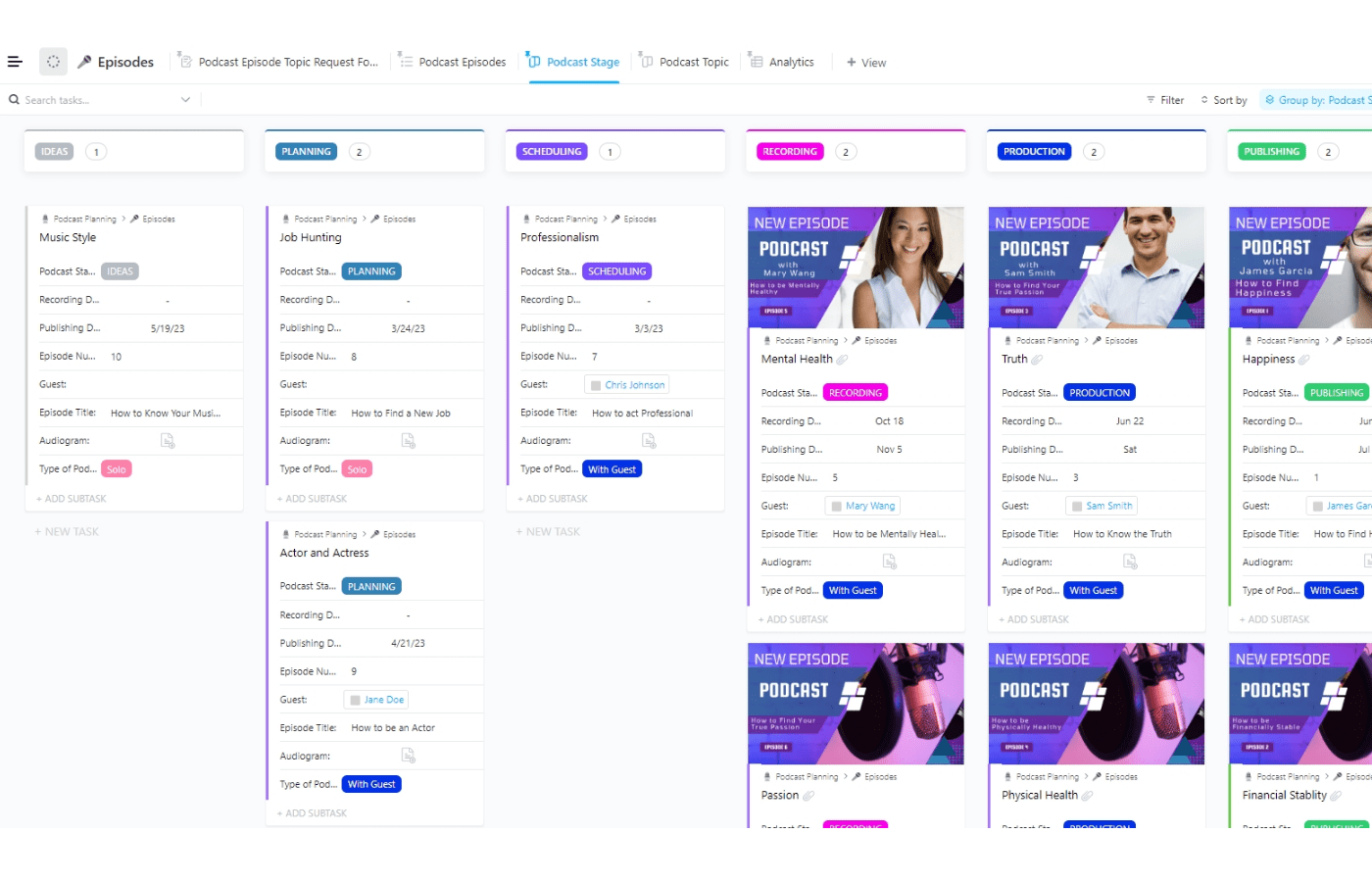Key takeaways
What is a Project Timeline?
A project timeline, also known as project time frame, provides a visual representation of the chronological order of tasks, milestones, and deadlines within a project.
By considering the start and end dates of tasks and the allocation of resources, the project timeline can determine the actual duration needed for the project team to complete the project. This allows for effective planning, organizing, and tracking of the project’s progress.
Why are Project Timelines Important?
Project timelines require significant effort and collaboration to create, manage, and monitor. However, it’s also a tool in project management that provides many benefits that make the effort worthwhile. Below are some examples.
Tracks progress
One of the primary reasons why project management timelines are important is that they allow for progress tracking. By breaking down a project into smaller tasks and assigning specific deadlines to each task, project managers can easily monitor the progress of each team member and the project as a whole. By regularly tracking progress against the established timeline, project managers can make informed decisions and take necessary actions to keep the project on schedule.
Improves schedule management
Project timelines are essential for effective schedule management. When creating a project timeline, it is important to carefully consider the dependencies and interrelationships between different tasks. By identifying these dependencies upfront, project managers can create a realistic schedule that takes into account any potential delays or constraints.
By adhering to the project timeline, project managers can minimize the risk of schedule slippage and ensure that the project stays on track.
Identifies potential setbacks or delays
Project managers are often faced with the question on what to do when the project runs late. A project timeline offers a solution by making it easier for project managers to identify any potential obstacles or risks that may impact the project’s progress.
For example, if a task is taking longer than anticipated or if there are resource constraints, these issues can be quickly identified by comparing the actual progress against the planned timeline. This allows project managers to take proactive measures to mitigate risks and address any potential setbacks before they escalate into major delays.
Keeps the team aligned
When everyone on the team has a clear understanding of what needs to be done and by when, it becomes easier for team members to coordinate their efforts and work towards a common goal.
Moreover, by providing a visual representation of the project’s timeline, team members can see how their tasks fit into the bigger picture and understand how their work contributes to the overall success of the project. This promotes collaboration and ensures that everyone is working towards the same objectives.
Maintains big picture
Having a project timeline enables project managers to maintain a big-picture view of the entire project. It allows them to see how different tasks and project milestones are interconnected and how they contribute towards achieving the overall project goals. This helps in making strategic decisions and adjusting the project plan if needed.
Enhances stakeholder communication
One of the most important elements to consider when developing a project management plan is to ensure communication protocols are established—especially with stakeholders. Stakeholders such as clients, sponsors, and other key decision-makers need to be kept informed about the progress of the project. By sharing the project timeline with stakeholders, they can have a clear understanding of when each milestone will be achieved and when they can expect to see results. This helps in managing stakeholder expectations and ensures that everyone is on the same page.
Key Elements of a Project Timeline
For your project timeline to be effective, it needs to have your project’s most relevant details. So what do you write in a project timeline?
- Tasks to complete
- Estimated task duration
- Dependencies
- Milestones and deliverables
Let’s go over each of them.
Tasks to complete
The first element to consider is the list of tasks that need to be completed. These tasks should be specific and clearly defined, outlining the activities that need to be carried out in order to achieve the project objectives.
In writing your project timeline, each task needs to have a unique identifier or name to make it easier to track and monitor progress.
Estimated task duration
In addition to listing the tasks, it is important to have an estimate of the duration of each task. This estimation takes into account the amount of time it will take to complete each task, based on factors such as complexity, available resources, and any potential constraints or limitations.
By estimating the task duration, project managers can allocate the necessary time and resources needed for each activity, ensuring that the project stays on track.
Dependencies
Another crucial aspect to consider when creating a project timeline is identifying dependencies between tasks. Dependencies is a project management term that refers to the relationship between different activities, where one task relies on the completion of another task before it can begin. These dependencies need to be clearly identified and documented in the project timeline, as they can have a significant impact on the overall project schedule.
By understanding these dependencies, project managers can plan and schedule activities in a logical sequence, minimizing any delays or bottlenecks that may arise.
Milestones and deliverables
Project milestones are key events or achievements throughout the project that mark significant progress or completion of a major phase. These milestones act as checkpoints for the project team and stakeholders, providing a sense of accomplishment and allowing for evaluation of progress. Deliverables, on the other hand, are tangible outcomes or results that are expected at specific points in time, such as reports, prototypes, or completed tasks.
Including milestones and deliverables in the project timeline helps ensure that deadlines are met and progress is tracked effectively.
Types of Project Timelines
Gantt chart
Gantt charts are powerful visual tools that project managers use to plan and track project timelines. These bar charts display tasks along a timeline, showing start dates, durations, and dependencies.
For project managers, Gantt charts offer clear visibility into project progress and resource allocation. However, they can become complex for large projects and may require frequent updates.
Despite these limitations, Gantt charts remain invaluable for project managers seeking to optimize timelines and enhance team coordination in their project management efforts.
Smartsheet offers Gantt chart templates that are easy to navigate, allowing you to assign tasks, set deadlines, and track progress seamlessly.
| Benefits | Limitations |
|---|---|
| • Visual representation: Provides a visual representation of the project schedule, taking into account the estimates and task dependencies. • Task management: Helps in managing and organizing project tasks, deadlines, and resources. • Communication: Facilitates communication among team members and stakeholders regarding project timelines and progress. | • Complexity: Can become complex and difficult to manage, especially when dealing with large and complex projects. • Lack of flexibility: Limited flexibility in accommodating changes and unforeseen circumstances. • Lack details on resource allocation: May not effectively show resource availability and workload. |
Recommended software
- ClickUp
- TeamGantt
- Smartsheet
- MS Project
PERT chart
PERT (Program Evaluation and Review Technique) charts are diagrams that enable project managers to identify critical paths, estimate project durations, and allocate resources effectively.
PERT charts excel at handling complex projects with uncertain timelines, allowing for probabilistic estimations. However, they can be time-consuming to create and maintain, especially for large projects.
Despite this limitation, PERT charts remain invaluable for project managers seeking to optimize schedules, mitigate risks, and ensure successful project completion in dynamic environments.
Lucidchart has several PERT chart templates you can explore and choose from based on your specific needs.
| Benefits | Limitations |
|---|---|
| • Task sequencing: Helps in visualizing the sequence of tasks and their interdependencies. • Critical path visibility: Facilitates the estimation of project completion time and identifies critical path activities, highlighting task dependencies and your critical path. • Accuracy: More accurate estimates than when relying on single task duration estimates. | • Complexity: Can be complex to create and maintain, especially for larger projects with numerous tasks. • Time-consuming: The initial setup and maintenance of PERT charts takes a lot of time. • Lack of flexibility: Limited flexibility in accommodating changes and unexpected disruptions. • Readability: Confusing for stakeholders to interpret |
Recommended software
- Lucidchart
- SmartDraw
Historical timeline
Historical timelines map events chronologically. These timelines provide a clear overview of project milestones and progress and excel at illustrating complex sequences and interdependencies, enhancing stakeholder communication.
Comrade provides project timeline templates you can use for your next project.
| Benefits | Limitations |
|---|---|
| • Documentation: Serves as a historical record of project activities, which can be valuable for future reference and learning. • Benchmarking: Provides a basis for benchmarking future projects against past performance and timelines. • Easy to interpret: Facilitates communication with stakeholders by presenting a clear historical overview of project milestones. | • Static representation: Historical timelines may not capture dynamic project changes and adaptations over time. • Incomplete context: Historical timelines may remove several factors such as challenges encountered, resource distribution, etc. |
Recommended software
Miro
Steps to Creating an Effective Project Timeline
Creating an effective project timeline is crucial for successful project management. By following these steps, project managers can develop a robust timeline that keeps their projects on track and stakeholders satisfied.
1. Clarify scope
Begin by clearly defining the project’s boundaries. This step involves identifying what is and isn’t included in the project, ensuring all stakeholders have a shared understanding of the project’s extent. A well-defined project scope prevents scope creep and sets the foundation for accurate timeline creation.
2. Set project goals and objectives
One of the best practices in project planning is to establish specific, measurable, achievable, relevant, and time-bound (SMART) goals for your project. These objectives will serve as guideposts throughout the project lifecycle, helping you stay focused on the desired outcomes and measure progress effectively.
3. Identify project tasks and milestones
Break down the project into smaller, manageable tasks and identify key milestones. This step requires a thorough analysis of the work required to achieve project objectives. Use techniques like work breakdown structure (WBS) to ensure no critical tasks are overlooked.
4. Estimate task durations and dependencies
Assess the time required for each task and determine the relationships between them. Some tasks may need to be completed sequentially, while others can be performed in parallel. Accurate estimation and dependency mapping are crucial for creating a realistic timeline.
5. Allocate resources and assign tasks
Match tasks with the appropriate team members based on their skills and availability. Ensure that resources are not overallocated and that there’s a clear understanding of who is responsible for each task. This step is vital for preventing bottlenecks and ensuring smooth project flow.
6. Create a visual representation of the project timeline
Develop a visual timeline using the software mentioned earlier in this article. Project timeline visual representations provide a clear overview of the project schedule, making it easier for team members and stakeholders to understand the project’s progression and identify potential issues.
7. Monitor and update
Remember that a project timeline is a living document. Regularly review and update it as the project progresses, and make adjustments for any changes or unforeseen circumstances. This ongoing process ensures that your timeline remains an accurate and useful tool throughout the project lifecycle.
Conclusion
Project timelines are the backbone of successful project management, coordinating team efforts and ensuring smooth execution. A well-crafted timeline not only keeps everyone aligned but also helps anticipate potential bottlenecks and adjust strategies proactively.
Reliable project management software plays a crucial role in streamlining the creation and maintenance of these timelines, offering real-time updates and visualization tools. By leveraging them, project managers can easily track progress, manage dependencies, and communicate changes efficiently.
A thoughtfully developed and consistently maintained project timeline serves as a roadmap to success, guiding teams from initiation to completion with clarity and purpose.








